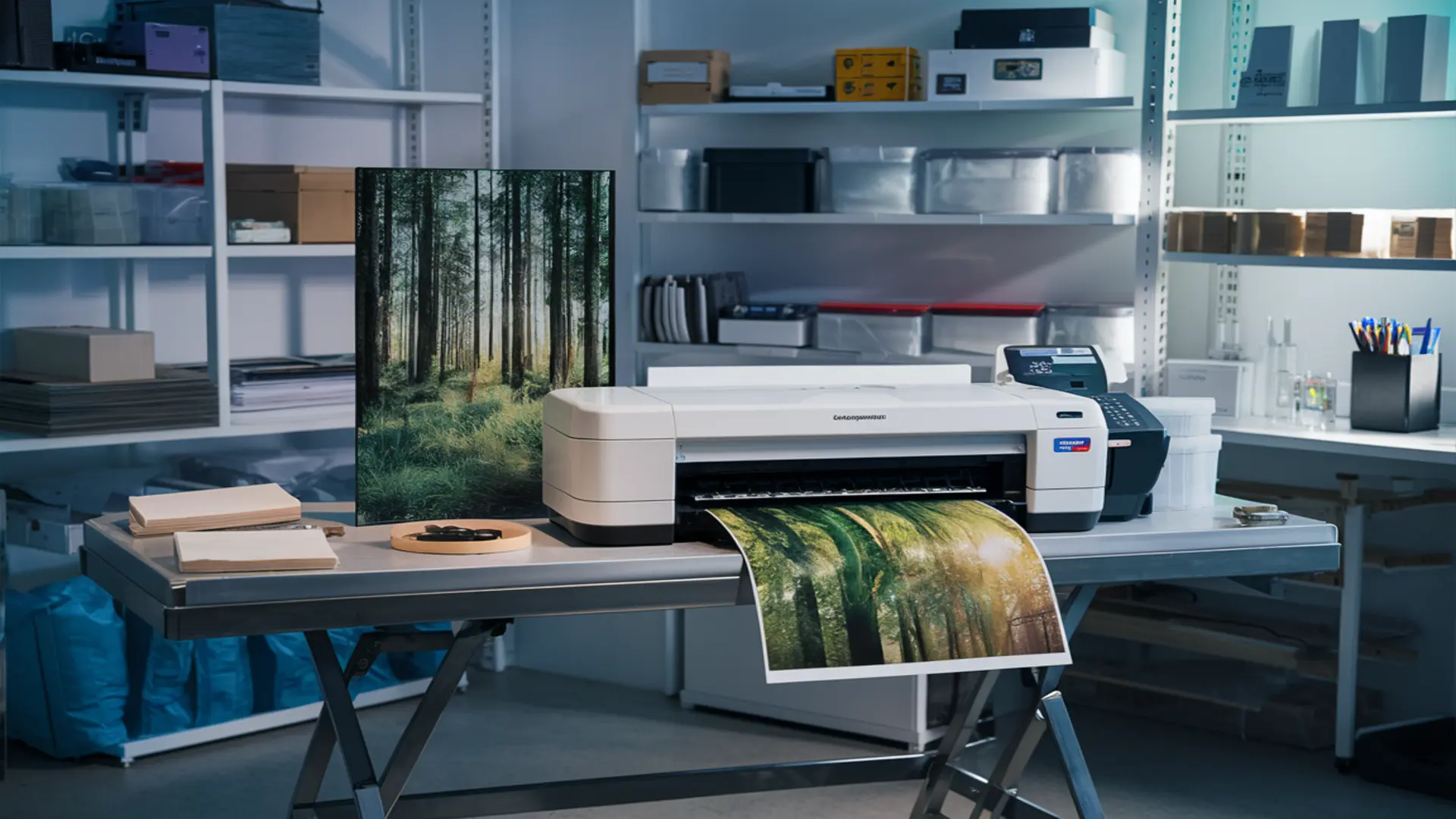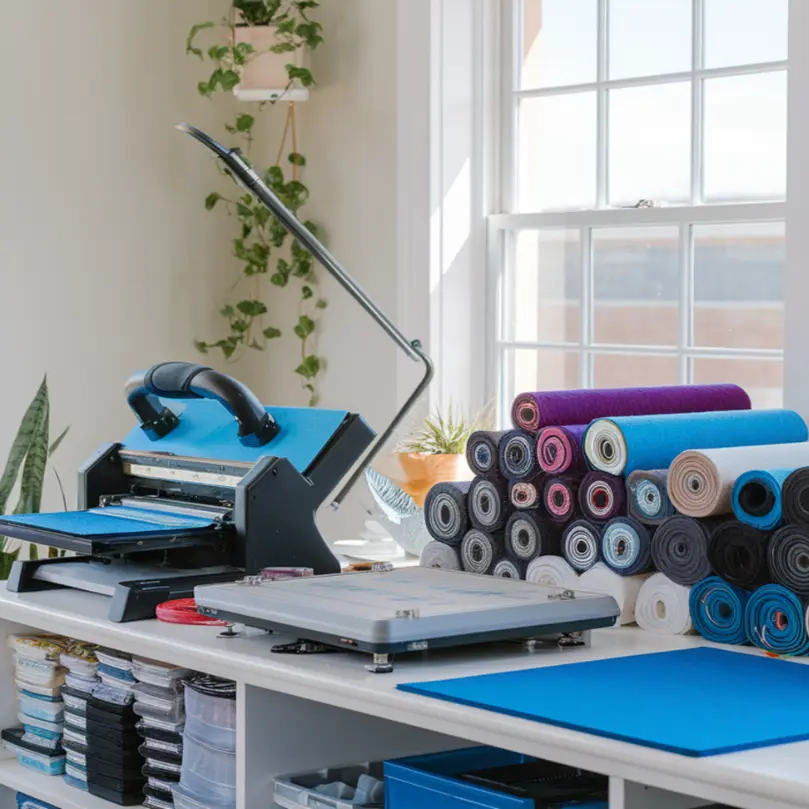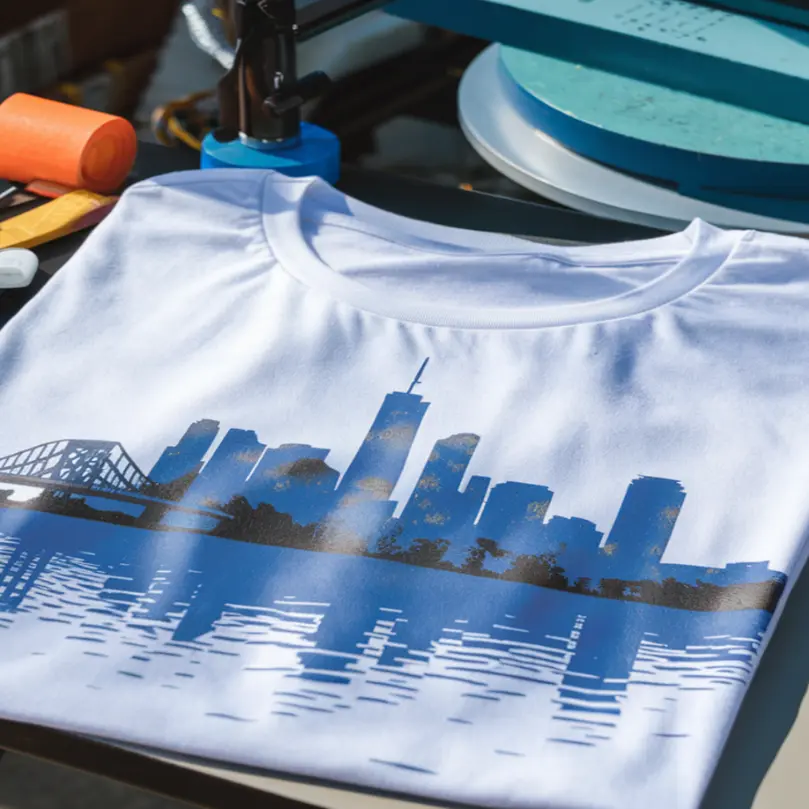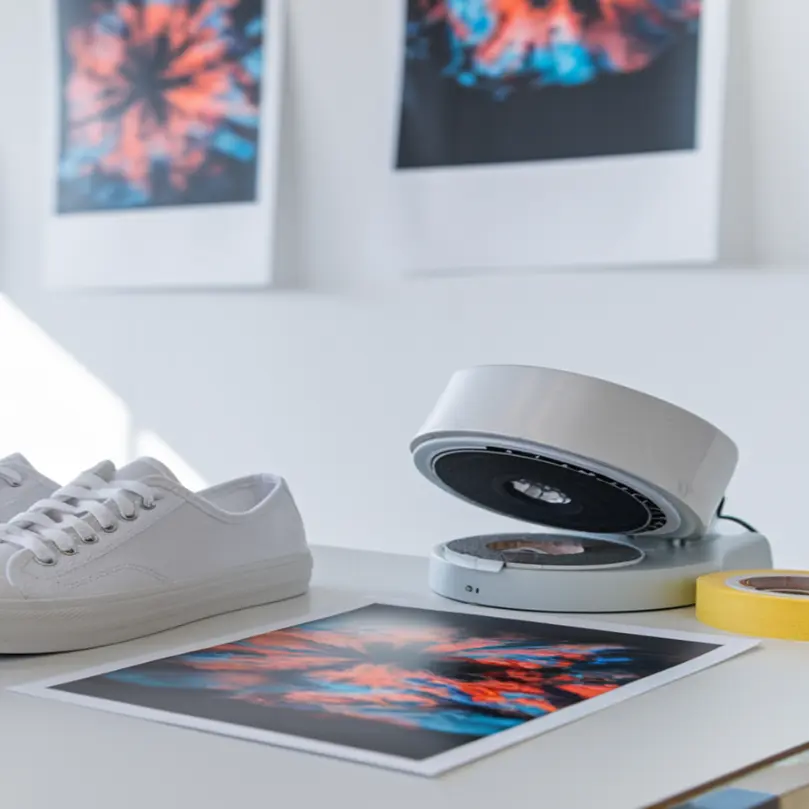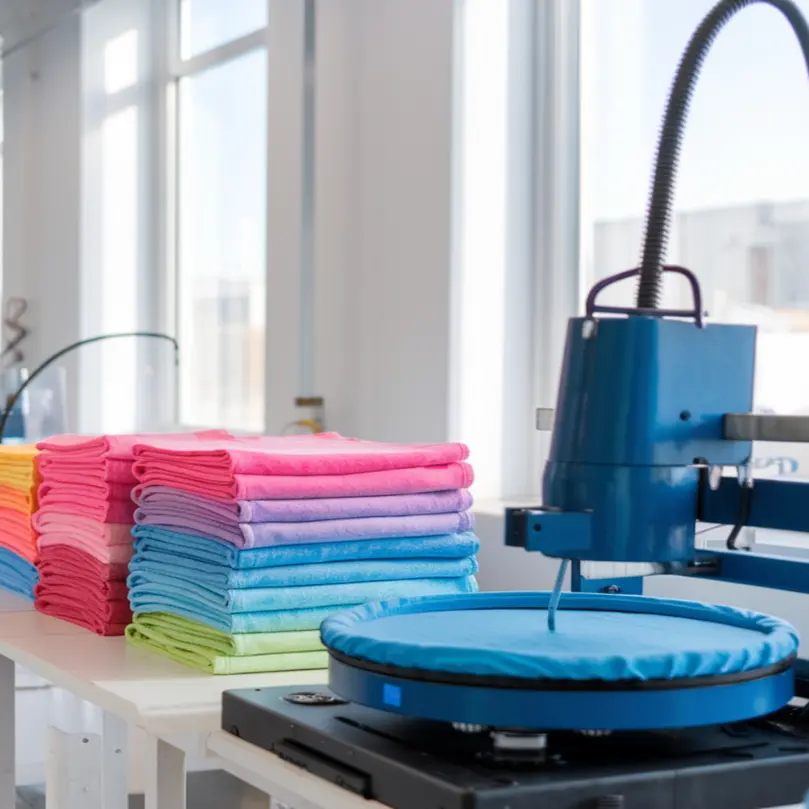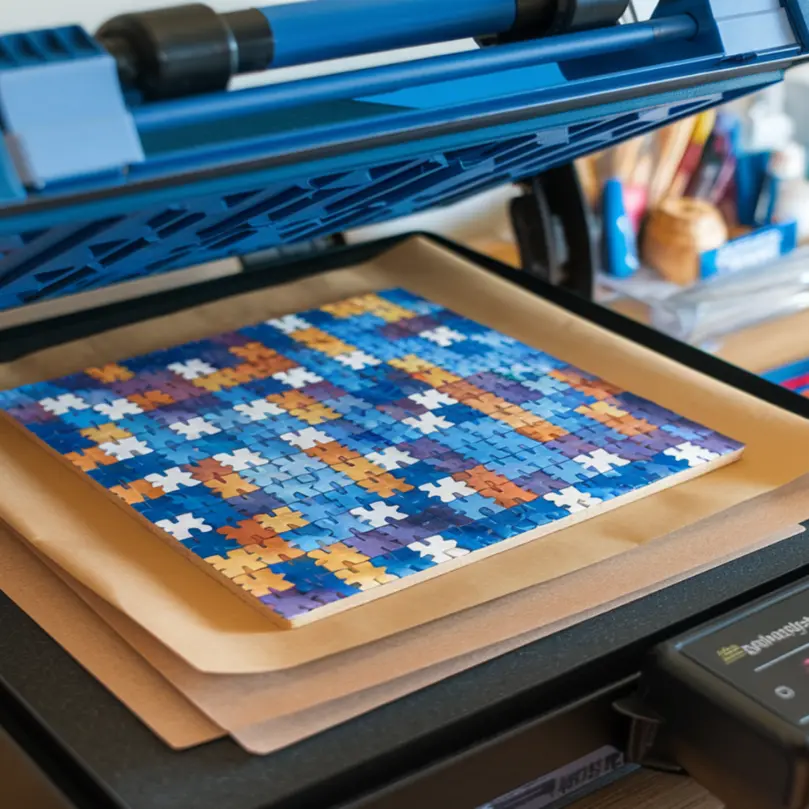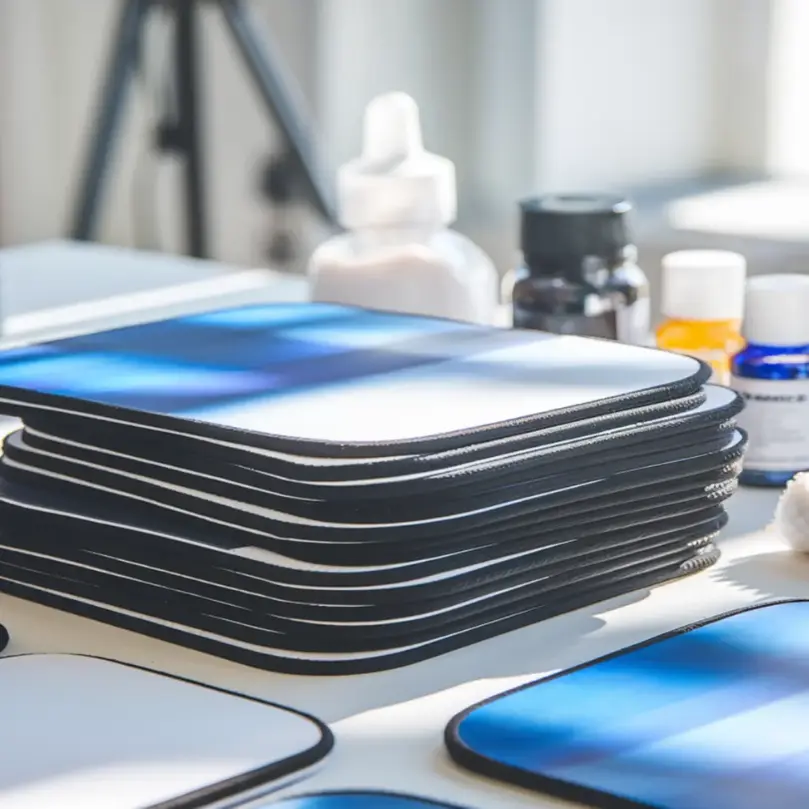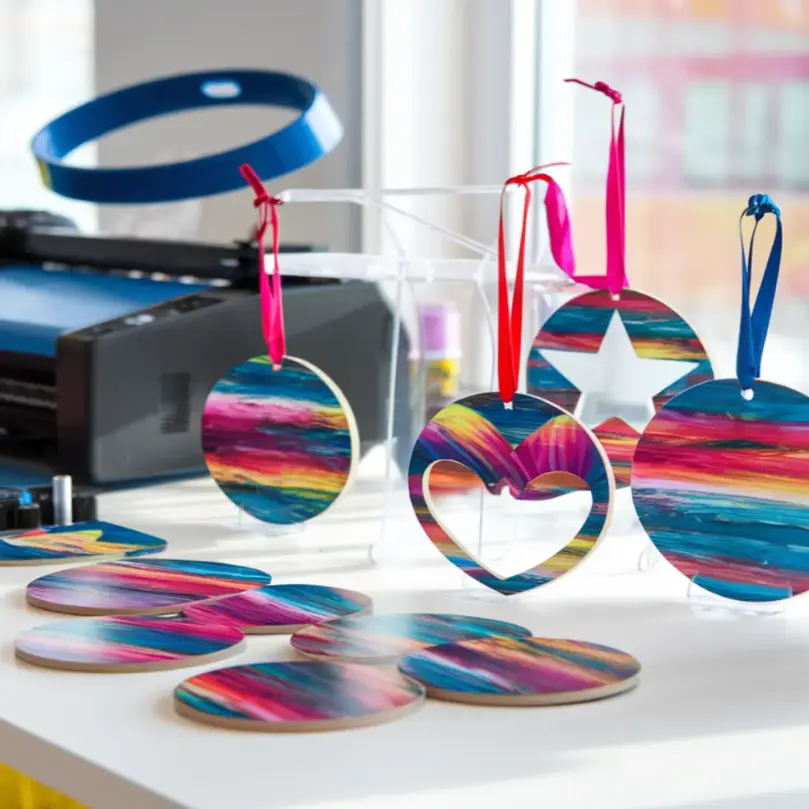Table of Contents
ToggleSo you are here in the search for a dye sublimation photo printer? Look no further! Decode the complex world of avid photo printing as we dissect the pros and cons of market favorites like the DNP DS620A. In this article, in addition to highlighting a dye sublimation photo printer (DNP DS620A), I discuss a printer photo printer that can be converted to sublimation (the ET-8550 – it is not a dye sublimation photo printer, rather a photo printer that can be converted). Tailored for both experts and novices, my guide cuts through the fluff to equip you with the essentials for choosing a printer that meets your demand for quality and efficiency. Ensuring you pick the right products from the right place is crucial, and that is where I step in.
Highlighting the Best in the Field
Let’s cut through the noise and get straight into it. The dye sublimation photo printers like the DNP DS620A and Epson EcoTank 8550 are pivotal for producing high-quality photo prints. The DNP DS620A is highly regarded by professional photographers due to its superior print quality and reliability. On the other hand, the Epson EcoTank 8550 is a regular photo printer that can be converted to sublimation printing. If you want to work on both sublimation and other crafts such as photos and stickers, it is normally recommended to maintain a separate printer for sublimation.
Now before we begin, you might wonder why I am qualified to write this review? I have created a website featuring extensive resources on sublimation, and I try to describe tests conducted on the products in my reviews.
Diving into the DNP DS620A – A Professional’s Dream
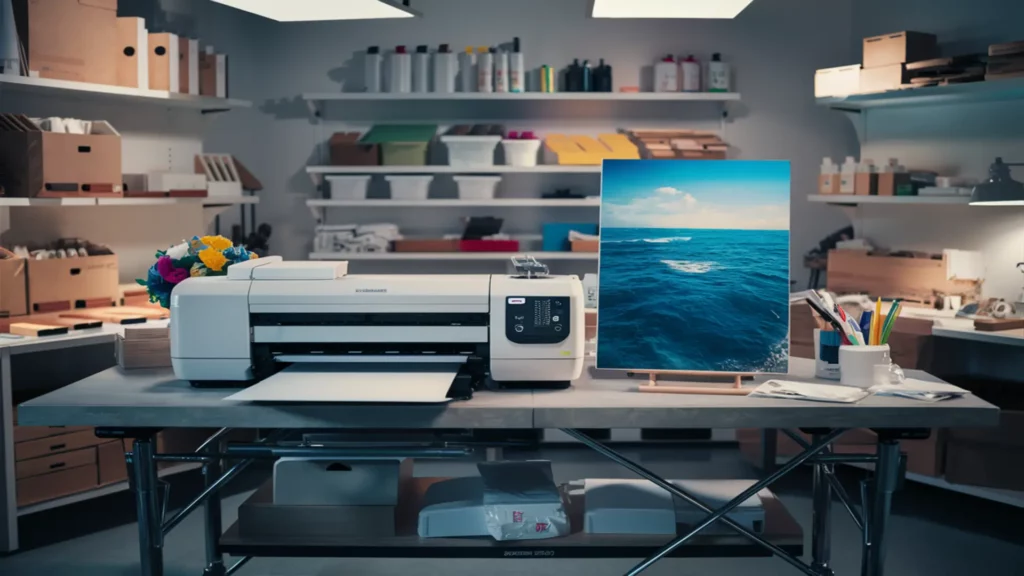
Prepare to dive into the world of the DNP DS620A, a powerful dye sublimation printer packed with features that ensure optimal quality. From its speedy printing to its multiple media format support, this printer is designed to enhance all your images, making it a favorite amongst wedding photographers. You can find the printer here.
Pros of DNP DS620A
The DNP DS620A offers a range of print sizes including 4×6 inches, 5×7 inches, and 6×8 inches, catering to diverse printing needs. This excellent sublimation printer also supports panoramic printing, expanding creative possibilities with 6×14 inches and 6×20 inches prints from 6×8 inches media.
Another compelling advantage of the DNP DS620A lies in its impressive speeds. With the ability to produce 400 prints per hour, waiting times are significantly reduced for both photographers and their clients. Additionally, the DS620A ensures energy consumption and media waste are minimized, thanks to a new standby mode that utilizes less than 0.5 watts.
Professionals like event and wedding photographers as well as content creators would find the DNP DS620A’s speed and print options particularly advantageous.
Cons of DNP DS620A
Despite its many advantages, the DNP DS620A printer, produced by one of the few printer manufacturers focusing on this niche, does have some drawbacks. One such limitation involves the printing process for panoramic images. The printer prints these images in sections, requiring the paper to exit and rewind multiple times before cutting. This can complicate the printing process and may require additional attention from the user.
Another downside to the DS620A involves potential driver errors when trying to print multiple copies. These issues stem from default settings not accommodating multiple copy print jobs.
Overall Conclusion on the DNP DS620A
Now its time to take a step back and look at the printer from a bird’s eye view. Lets try to answer the pressing question: should you buy this printer? The compact design coupled with the ability to print a wide range of photo sizes, from small to panoramic, contributes to its ease of use and versatility in various settings. However, it is important to plan for the panoramic print process, as it requires bypassing the use of standard and enlargement print trays.
The high capacity of the DS620A to hold sufficient paper and dye ribbon for producing 400 4×6 photos without reloading makes it suitable for high-volume event photography and photo booths. Moreover, the DNP DS620A ensures minimal downtime in professional settings with its advanced exchange warranty which is available at purchase, where a replacement printer is immediately dispatched without the need to first return the original unit. This feature can be a lifesaver, especially during high-pressure events and tight deadlines.
Overall, this printer is a great choice for those looking for a dye sublimation photo printer for professional use. Boasting several success stories and offering a combination of high speed, ease of use and high-quality printing for event photography, this printer is a great choice for your photo booth!
Exploring the Epson EcoTank 8550 – A Beginner’s Choice
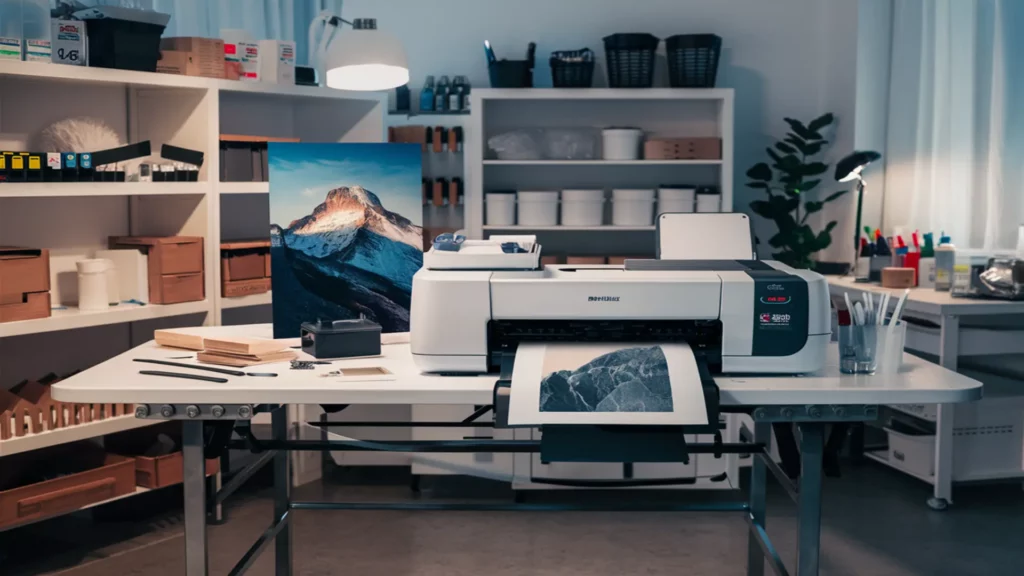
Let’s now explore the Epson EcoTank 8550, an all-in-one wide-format printer that shines in producing lab-quality photos and various creative projects, which can be converted to sublimation. You can find the printer here.
Key features of the Epson EcoTank 8550 include:
- 6-color Claria ET Premium Ink system for a wide color gamut and detailed photo printing
- Maximum print resolution of 5,760 x 1,440 dpi
- Ability to handle various paper types including cardstock and fine art papers
I’ll start by outlining the testing of the Epson ET-8550 sublimation printer. This test was performed using a towel blank and A-Sub sublimation paper. The printer features an automated tray pull-out, and to convert it, sublimation ink was installed instead of the original ink. The resulting colors on the sublimation paper were bright and vibrant. The towel was pressed at 400 degrees for 60 seconds, and I was absolutely thrilled with the results!
The printer’s EcoTank system provides cost savings of up to 80 percent on ink with its low-cost replacement bottles, potentially offering up to 2 years of printing without the need to purchase more ink. It also features a 4.3-inch full-color touch panel display for easy navigation, setup, and PC-free printing, along with a suite of connectivity options such as Ethernet, USB, Wi-Fi, SD Card slots, and mobile device printing through the Epson SmartPanel App.
Pros of Epson EcoTank 8550
One of the key advantages of the Epson EcoTank 8550 is the significant savings on ink. The printer’s cost-effective bottle system, as opposed to traditional cartridges, can offer an estimated 80% savings on ink. This translates to a lower cost per print compared to using professional printing services. Additionally, each set of ink bottles supplied with the EcoTank 8550 is designed to last up to two years, thus significantly extending periods between refills. The keyed bottles also prevent incorrect ink placement during refills, making the refill process hassle-free.
The EcoTank 8550 also boasts a modern and compact design, making it a stylish addition to any workspace. It comes with multiple connectivity options such as Ethernet, USB, Wi-Fi, and SD Card, supplemented by mobile printing capabilities for a convenient user experience.
When it comes to print quality, the EcoTank 8550 ensures:
- Vibrant colors
- Sharp text
- Printing on various media types
- Printing on posterboard and fine art papers up to 1.3mm thick
This makes it an excellent sublimation printer for diverse creative projects, especially when compared to other sublimation printers on the market. There are many ideas that I share in a separate article for creative crafts and apparel ideas for sublimation!
Cons of Epson EcoTank 8550
Despite the many advantages, the Epson EcoTank 8550 does have some drawbacks. One potential issue involves air getting into the ink lines. While the EcoTank system is not a traditional Continuous Ink Supply System (CISS), it may encounter similar problems, potentially causing printing issues. This is something users need to be aware of and monitor regularly to ensure optimal print quality.
Another downside to the EcoTank 8550 involves the need for a special cleaner when switching inks. For maintaining the printer, it’s recommended to use a special cleaner, such as Koala’s printer flush, to fully remove sublimation ink before switching to other inks. This can add to the maintenance time and costs but is essential for ensuring continued print quality and longevity of the printer.
High-Level Conclusion on the Epson EcoTank 8550
Depending on your needs and preferences the Epson EcoTank ET-8550 is a great choice. The printer offers:
- Very good print quality that is satisfactory for most users
- An efficient and cost-effective printing solution
- Excellent print resolution
Keep in mind that the ET-8550 is not a dedicated sublimation printer and you will need to go through the process of conversion. This will void the warranty with the manufacturer.
Overall, the Epson EcoTank 8550 is a fantastic large format photo printer, boasting excellent success stories of high quality photos and prints, at a more affordable price. If you are a hobbyist looking for a high-quality photo printer that you can convert to sublimation, the Epson ECOTank ET-8550 is a great option. However, if you are just looking for an Epson printer to convert to sublimation, you might want to consider looking into other Epson EcoTank models.
Decoding Dye Sublimation Printing
Dye sublimation printing is a digital technique where heat-activated dyes are first printed on a synthetic substrate and then heat cured to create a vibrant dye sublimation print. This process, which is used to produce sublimation prints, involves:
- Sublimation inks reacting with heat and pressure to transition into a gaseous state
- The gas then penetrating the pores of the substrate
- The gas solidifying as the substrate cools
This results in vivid, photographic color.
Two primary methods of dye sublimation exist: transfer printing and direct dye printing. In transfer printing, inks are first printed on transfer paper and then transferred to the fabric under heat and pressure. In direct dye printing, the inks are printed directly onto the fabric that is later heat cured. Direct dye sublimation is considered more sustainable as it uses water-based dyes and eliminates the need for paper in the printing process. However, it may result in ghosting or see-through threads when the fabric is stretched. On the other hand, transfer dye sub printing is faster but requires an additional step of printing on transfer paper.
While dye sublimation printing offers many advantages such as a continuous tone, instant drying of inks, and fewer moving parts over the print media, it has its limitations. It requires dye sublimation printers and specially formulated inks, which may not be the most cost-effective option for large quantities. Understanding how dye sublimation printer work is essential to determine if this method is suitable for your project. The method is slower and more labor-intensive than other methods, as it requires pressing each item individually. Furthermore, the process is limited to printing onto fabric up to 10 feet wide, necessitating seams for larger print jobs. Lastly, sublimation printing is not suitable for 100-percent cotton materials or items that will be exposed to the sun for extended periods due to ink instability.
Choosing Your Perfect Printer
When selecting a printer, it’s important to consider both the initial purchase price and the long-term costs. For instance, a printer such as the DNP DS620A, can ultimately yield savings on ink and maintenance over its lifespan. Also crucial is to review the various media that the printer can handle and the print sizes it offers. Printers range from small format desktop printers ideal for promotional items to wide format printers for larger projects such as apparel or flags.
For users with specific demands, such as quick printing for events or high-volume output for sports team uniforms, assessing the printer’s speed is critical. Furthermore, consider the specifics of printer technology such as the type of print heads suitable for water-based inks. Ensure the printer’s overall features can guarantee high-quality, durable prints. Finding the right balance of these factors will help you choose the perfect process inkjet printers that best suits your needs.
Essential Equipment and Supplies
For successful sublimation printing, you’ll need a few essential pieces of equipment and supplies. Here are some options to consider:
- Traditional heat presses (both swing-away and clamshell models)
- Mug presses
- Convection ovens
- Portable devices like the Cricut EasyPress 2 and Mug Press
The choice of heat press machine will depend on the size and type of items you plan to print.
Sublimation paper is essential for transferring designs onto substrates, and heat-resistant tape is used to secure the paper onto the substrate to prevent movement during the heat press process. Lastly, you’ll need materials suitable for dye sublimation. These include 100% polyester fabric, polymer-coated hardboard, polymer-coated wood, and various others that have been coated with a polymer for optimal results. Special coatings or preparations are required for materials like hardboard, wood, acrylic, and vinyl.
Frequently Asked Questions
There are a few common questions that often arise when it comes to dye sublimation printing.
One common query is about the durability of sublimation prints. Sublimation prints are known for their durability, being less prone to smudging, and having better water resistance compared to some inkjet prints. This makes them suitable for items that require frequent washing or outdoor exposure.
Lastly, many people wonder about options for placing photos on customized gifts. Two options exist: converting an existing inkjet printer or purchasing a specialized sublimation printer. Both methods have their pros and cons, so it’s best to consider your specific needs and budget when making a decision.
Summary
Through this comprehensive guide, we have explored the world of dye sublimation printing, delving into the specifics of top printers like the DNP DS620A and the Epson EcoTank 8550. We’ve examined their pros and cons, shared personal experiences, and decoded the dye sublimation printing process. We’ve also discussed how to choose your perfect printer and the essential equipment and supplies necessary for sublimation printing. For those wondering if they can use a sublimation printer for sublimation projects, don’t miss my separate article on the topic!
Whether you’re a professional photographer looking for high-quality prints or a beginner exploring the world of sublimation printing, understanding the intricacies of these printers and their process can help you maximize their potential. Remember, the right dye sublimation printer can transform your images, enhance your creativity, and elevate your projects to new heights.
Frequently Asked Questions
Is dye sublimation good for photo printing?
Yes, dye sublimation is an excellent choice for photo printing, as it can achieve consistent and accurate color reproduction, making it popular in professional photography and graphic design.
What printers use dye sublimation ink?
Printers that use dye sublimation ink include Epson SureColor F170, F570 Pro, F6470, F6470H, F7200, and F9470. These printers are designed for dye-sublimation printing.
What is the difference between dye sublimation and inkjet for photos?
Dye sublimation transfers dye into the substrate, resulting in a more permanent image, and can produce higher-resolution prints than inkjet due to the use of heat to vaporize the ink.
Are sublimation prints durable?
Yes, sublimation prints are known for their durability, making them less prone to smudging and offering better water resistance than some inkjet prints.

